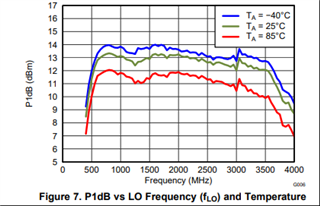Q1
We intend using the TRF3705 in an application where the baseband signal is only about 50kHz and coming from a micro via some circuitry. All the examples show 50R resistor to ground on these inputs. In our application burning 4 x 10mA peak of drive current in these is undesirable.
The Data sheet just gives an input impedance of 8k||4.6p.
Is there any DC current? If so how much?
Q2
The 'recommended' input signals range from 0 to 0.5V (0.25V Common mode). Data says VCM can be up to 0.5V. If we lift VCM from 0.25 to 0.5 do we suffer any penalty (like increased supply current)?
Q3
Sometimes a 'rough' schematic - at least for the bits around pin connection can be very useful. Are these available?



